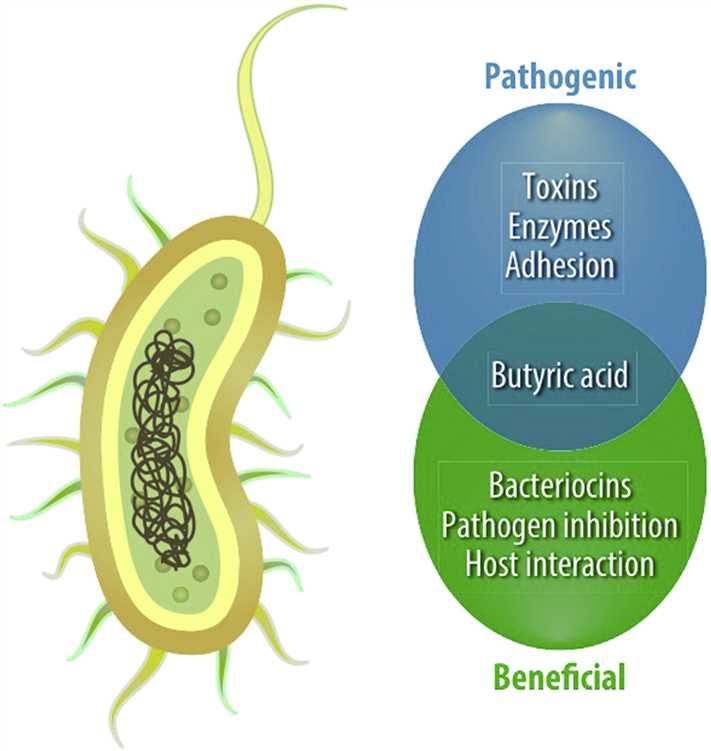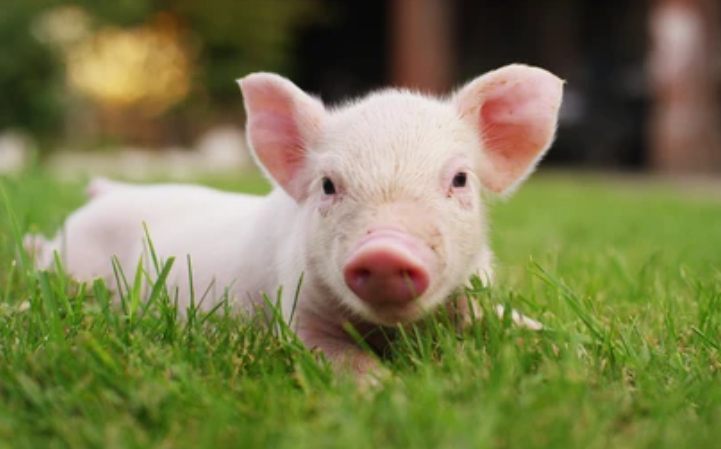Connie: My dear friends, thank you for tuning into today’s episode. On this beautiful Saturday evening, we will spend some time and talk about the application of probiotics, a topic that can be useful for many of you. And for today’s episode, we again invited our old friend, Dr. Hofstadter. Thank you for being here with us today, Dr. Hofstadter.
Dr. Hofstadter: Thanks for having me, Connie. And hello everyone. I’m glad to meet you all on air on this beautiful Saturday night.
Connie: In the previous program, we talked about the effects of probiotics on performance indicators in non-ruminants and ruminants. We learned that the application of probiotics in ruminants mainly focuses on improving rumen fermentation efficiency, such as stabilizing pH and enhancing fiber digestion and reducing rumen methane production, so that animal production performance is improved. Among several probiotics, yeast is the most widely studied, followed by the application of bacterial probiotics in ruminant nutrition. In non-ruminants, bacterial probiotics are better than yeast in improving production performance. Today we will discuss other beneficial effects of probiotics in animals. Where do we start, Dr. Hofstadter?
Dr. Hofstadter: Maybe we can start from Potential zoonotic pathogens such as Escherichia coli, Clostridium and Salmonelle, which fall off with feces. This represents a serious foodborne public health risk associated with cattle production. Adding probiotics to feed animals can reduce the shedding of these intestinal pathogenic microorganisms into the environment and reduce the pollution of meat and milk.
Connie: So what kinds of probiotics do you think are effective for pathogen shedding?
Dr. Hofstadter: From the results of systematic review and meta-analysis, we can see that the probiotic combination of Lactobacillus acidophilus and Propionibacterium flexneri was more effective in reducing the abscission rate of fecal Escherichia coli in cattle farms.
Connie: Are similar conditions observed in poultry animals?
Dr. Hofstadter: Absolutely. Adding Bacillus subtilis and Bacillus licheniformis to their diet can reduce the shedding of Escherichia coli in laying hens.
Connie: Have researchers found out about the relevant mechanisms?
Dr. Hofstadter: Yeah. The mechanism of pathogen clearance from the intestine has been found to be attributed to competitive rejection, bacteriocin production, and stabilization of intestinal epithelial tight junction proteins.
Connie: I have seen reports that in pigs, the adhesion of pathogens to intestinal mucosa is reduced by Bifidobacterium lactis or Lactobacillus rhamnosus. In addition, probiotics can also inhibit the invasion of pathogens into intestinal epithelial cells. What does it mean from your point of view?
Dr. Hofstadter: I think for me, it means that probiotics provide an opportunity to minimize the digestion and carrying of human pathogens by animals and ensure safe operation from farm to table.
Connie: Raising small ruminants, such as calves, is an important activity in the dairy industry. Because these ruminants represent the future heifer or cow population. Moreover, it is recognized that calf feeding practices will affect the lifetime milk yield of dairy cows. What role do probiotics play in this regard?
Dr. Hofstadter: A few different roles. You see, young ruminants do not have a fully developed rumen for microbial fermentation. Therefore, it is necessary to artificially add some probiotics to temporarily replace the function of the rumen. Probiotics and yeasts play different roles in small ruminants. Probiotic preparations mainly containing lactic acid bacteria have been studied in the case of small ruminants.
Connie: In what ways can probiotics provide health protection for small ruminants?
Dr. Hofstadter: Lactic acid bacteria and bacillus are generally targeted at the small intestine. They mainly restrict the colonization of intestinal pathogens through competition and immunity, and thus prevent diarrhea, coliform fecal abscission, improve feed efficiency and growth, and reduce the incidence rate of calves. In addition, a meta-analysis showed that Lactobacillus supplementation in calves can reduce the incidence rate of diarrhea, increase body weight and feed efficiency.
Connie: That’s seriously a lot of benefits. Are yeast probiotics similar to lactic acid bacteria?
Dr. Hofstadter: Not all. The role of yeast probiotics is to establish rumen microbial communities such as fiber decomposing bacteria and ciliates in advance, so as to start the digestion of complex feed carbohydrates in advance. With the rapid development of functional rumen mediated by nipple length, width, and rumen wall thickness, researchers have observed improvements in dry matters intake, feed efficiency and growth rate, and meat quality attributes. I want to point out that this beneficial effect is more obvious in calves under poor and stressful feeding conditions than under ideal management conditions.
Connie: Interesting. So I know that the body usually maintains a balance between oxidants and antioxidants. If this balance is interrupted, the body is hurt. What is the role of probiotics in this regard?
Dr. Hofstadter: Oxidants are usually produced in normal metabolic activities, you know, like reactive oxygen species and nitrogen. Endogenous superoxide dismutase, peroxidase, catalase, and reduced glutathione are all antioxidants. The increase of reactive oxygen species is harmful to animal health. Probiotics in the diet can eliminate the adverse effects of oxidative stress by increasing antioxidant enzyme activity to a large extent.
Connie: So in other words, probiotics help prevent excessive accumulation of reactive oxygen species and improve health and production parameters?
Dr. Hofstadter: Exactly. This effect can be achieved by probiotics such as Bacillus subtilis and their combination with BLA yeast. In this regard, the reduction of oxidative stress may be attributed to the stability of intestinal microflora and their metabolic activities.
Connie: I’m very curious about the effect of probiotics on meat quality, as this is something that’s relevant to most people today. Can you tell us more about it?
Dr. Hofstadter: Of course. Adding probiotics to the diet can improve meat quality parameters, like pH value, tenderness, and color. However, this effect is not universal. Because some strains of probiotics have no encouraging benefits on meat quality. This may be due to the species difference in the composition of probiotics and intestinal flora, which affects the pH value of the gastrointestinal tract. Moreover, this difference also affects the growth of animals and the protein and fatty acid composition of meat.
Connie: I see. As a green feed additive, probiotics have been accepted by consumers. Although there are so many additives that can be used to improve productivity and efficiency, probiotic supplementation has become the first choice for animal food production systems because of its unique benefits. We have seen a great deal of work discussing the use of probiotics in ruminants. What is probiotics’ main purpose here?
Dr. Hofstadter: It has always been to improve fermentation efficiency, thus affecting production performance. The most studied probiotics is yeast, followed by bacterial probiotics in ruminant nutrition. They can stabilize rumen pH and increase fiber digestion.
Connie: In non-ruminants, especially poultry and pigs, bacterial probiotics are more dominant than yeast in affecting performance properties. The commonly used probiotics are Bacillus, Lactobacillus, Streptococcus, Micrococcus, Enterococcus, Aspergillus, yeast, and Candida. What role do they play when they are added to food?
Dr. Hofstadter: So they help maintain and improve beneficial intestinal microflora, enhance host immunity, and inhibit pathogens in the intestine. However, depending on the type and strain of probiotics used in the diet, these beneficial effects are not always achieved.
Connie: In the modern animal husbandry production system, it becomes popular to feed monogastric animals with whole feed, ruminants with concentrate, and ruminants with steam granulation. What should we pay special attention to when probiotics are used in these feeds?
Dr. Hofstadter: Well, I would say it’s the stability of calories or particles. Because most yeast and lactic acid bacteria may be killed or inactivated during granulation. So microencapsulated and more temperature-resistant commercial probiotics are the needs of today’s feed industry. In contrast, farm-level top replenishment may not require any thermal stability. In both cases, it is important to ensure that animals receive the correct specific probiotic dose per day to achieve potential benefits.
Connie: This is definitely a point worth pondering. Like you said, the use of probiotics has triggered great interest in animal husbandry around the world because of its countless health and production benefits, especially in the context of more natural and antibiotic-free animal production. They have been widely evaluated in animal nutrition to improve the balance of beneficial intestinal microbiota and eliminate harmful intestinal pathogens, resulting in a series of advantages. Such as enhancing gastrointestinal function, improving intestinal and systemic immunity, and improving the health status of ruminants and non-ruminants. Therefore, these benefits have a positive impact on the overall production performance and farm profitability. And in today’s episode, we have also discussed that probiotics have been proven to reduce the incidence rate of intestinal diseases, reduce the fecal loss of intestinal pathogens, and improve the intestinal barrier function and meat and milk quality of animal food. Okay, that’s it from us today. I hope you enjoyed our content. Thanks, Dr. Hofstadter, for providing such useful information. And thanks everyone for listening. We will see you at the same time next week. Bye.
Dr. Hofstadter: Thanks, everyone. I hope we will see you next time.
